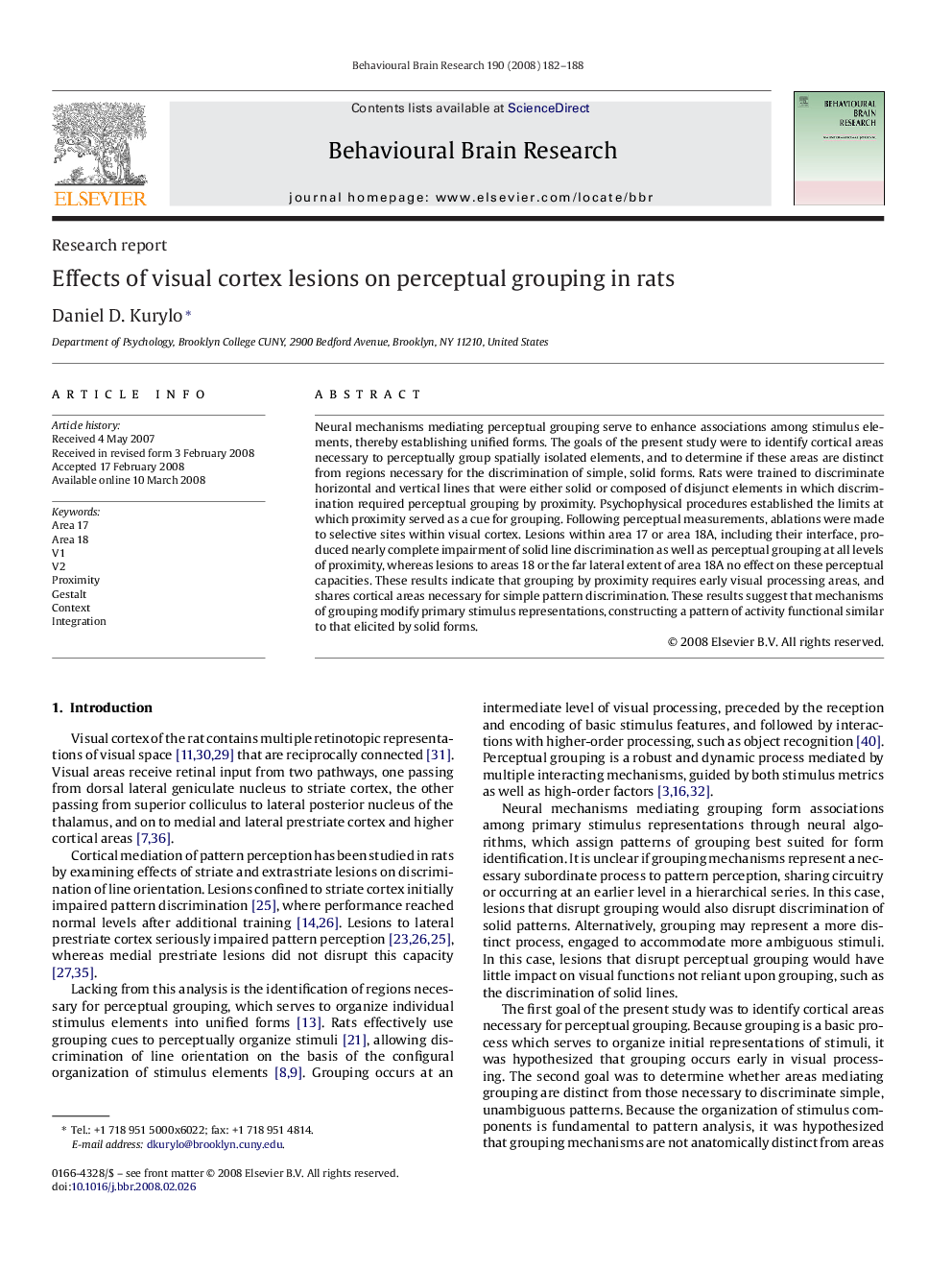| Article ID | Journal | Published Year | Pages | File Type |
|---|---|---|---|---|
| 4314895 | Behavioural Brain Research | 2008 | 7 Pages |
Neural mechanisms mediating perceptual grouping serve to enhance associations among stimulus elements, thereby establishing unified forms. The goals of the present study were to identify cortical areas necessary to perceptually group spatially isolated elements, and to determine if these areas are distinct from regions necessary for the discrimination of simple, solid forms. Rats were trained to discriminate horizontal and vertical lines that were either solid or composed of disjunct elements in which discrimination required perceptual grouping by proximity. Psychophysical procedures established the limits at which proximity served as a cue for grouping. Following perceptual measurements, ablations were made to selective sites within visual cortex. Lesions within area 17 or area 18A, including their interface, produced nearly complete impairment of solid line discrimination as well as perceptual grouping at all levels of proximity, whereas lesions to areas 18 or the far lateral extent of area 18A no effect on these perceptual capacities. These results indicate that grouping by proximity requires early visual processing areas, and shares cortical areas necessary for simple pattern discrimination. These results suggest that mechanisms of grouping modify primary stimulus representations, constructing a pattern of activity functional similar to that elicited by solid forms.
